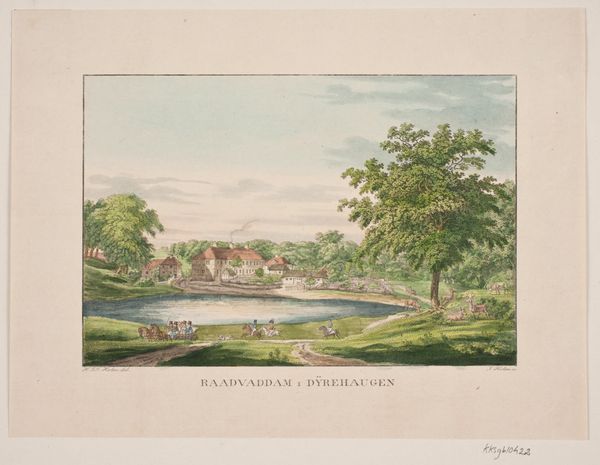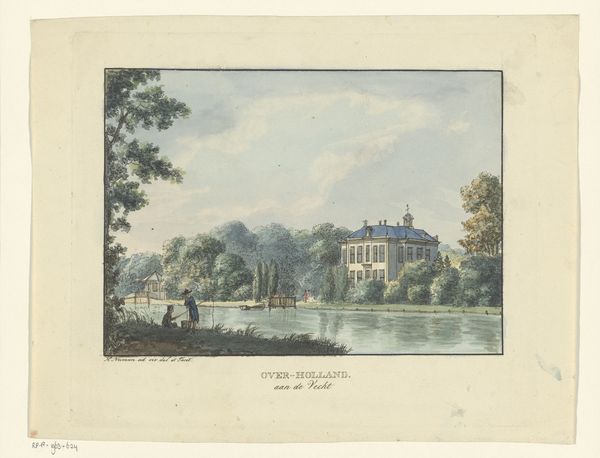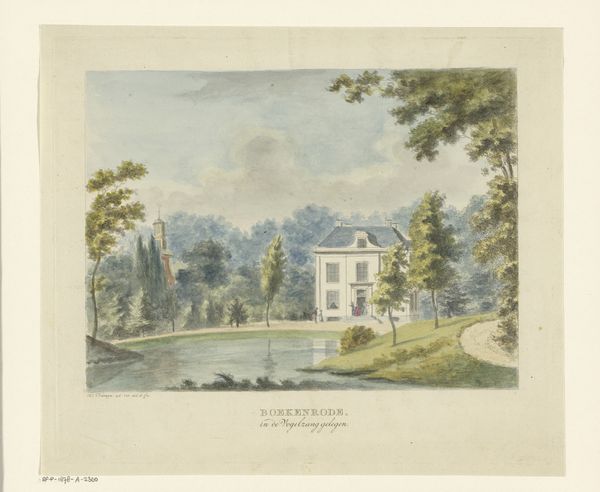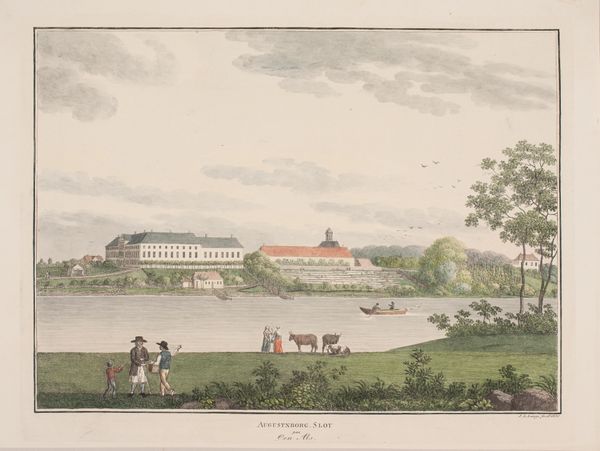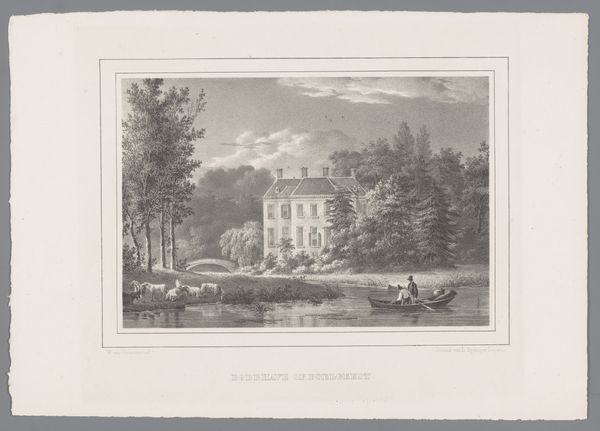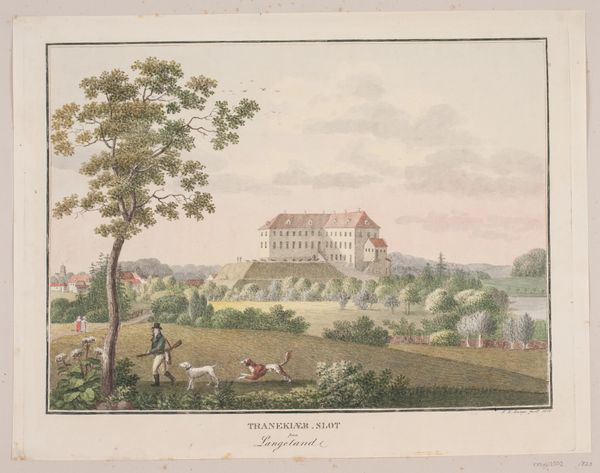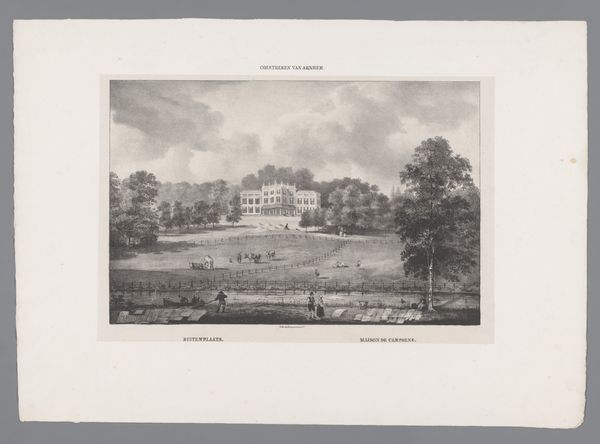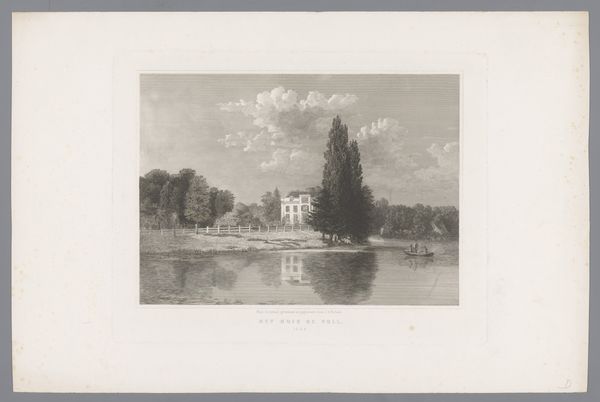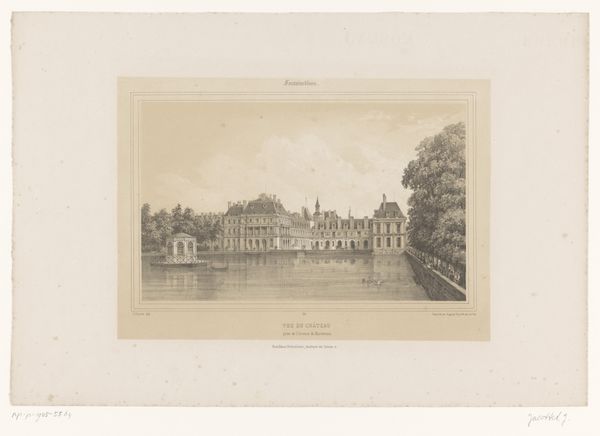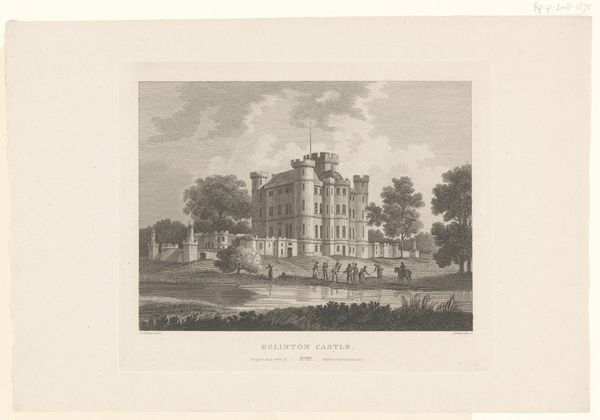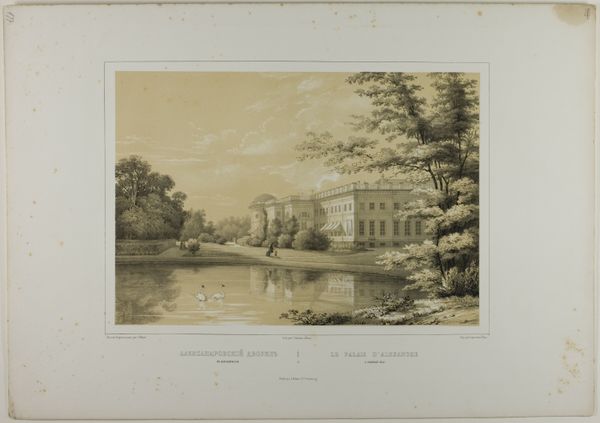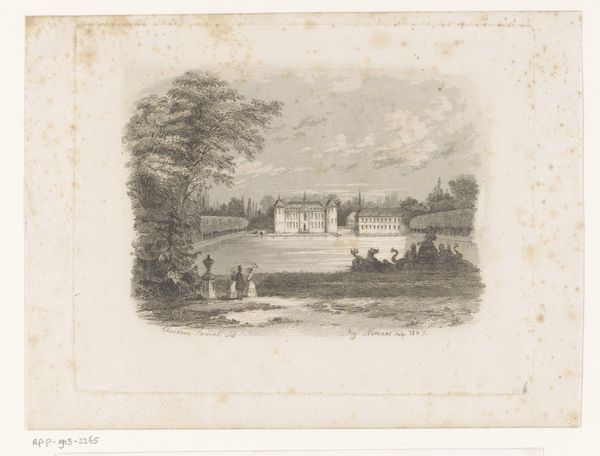
print, watercolor, engraving
#
water colours
# print
#
landscape
#
watercolor
#
cityscape
#
watercolour illustration
#
academic-art
#
engraving
Dimensions: 160 mm (height) x 215 mm (width) (bladmaal)
Curator: This delicate rendering from 1826 is titled "Dronninggaard," a watercolor and engraving work by Jens Holm. It’s part of the collection here at the SMK. Editor: My initial impression is one of idyllic calm. It feels staged, somehow, like a scene from a play. The crispness, the placement of the cows grazing just so... Curator: Precisely. Holm presents a vision of pastoral harmony very much in line with the sensibilities of the time. Note how the manor house presides over the landscape, a symbol of order and civilization. Such images were commissioned and consumed by the elite. Editor: The relationship between the land, the manor, and the people becomes really telling here. Who truly benefited from this idealized depiction? Curator: Art’s relationship with power can’t be ignored, absolutely. Holm’s meticulous detail in rendering both the architecture and the natural elements reflects the growing fascination with empiricism that permeated cultural institutions in the 19th century. We’re also seeing emerging forms of art patronage that are closely linked to burgeoning Danish nationalism. Editor: You’re right; the serene presentation glosses over what might have been harsh realities for many rural people at the time. The Romantic framing, of course, gives us an image divorced from lived experiences, serving very specific social and political agendas. I find the absence of farm buildings, or evidence of agricultural labour, pretty striking. Curator: This piece fits into a tradition of landscape painting that celebrated property and privilege. Consider how similar views of other estates were circulated as symbols of national pride and status. These weren't merely landscapes; they were carefully constructed images. Editor: And seeing it now through a contemporary lens forces us to confront the politics of representation and ask whose stories were deliberately left out of these historical narratives. Curator: Indeed, we might also think of the role these types of depictions play in shaping cultural memory and reinforcing hierarchies. Looking at "Dronninggaard," through the work of Jens Holm, is like uncovering a complex history. Editor: Yes, it pushes us to deconstruct the myths of the past and look critically at what’s celebrated – and what is silenced.
Comments
No comments
Be the first to comment and join the conversation on the ultimate creative platform.
